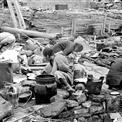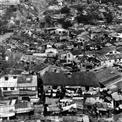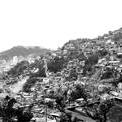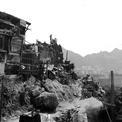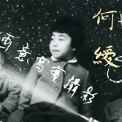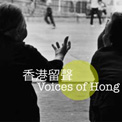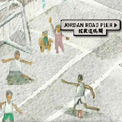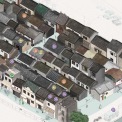-
History & Society
- Education in Pre-war Hong Kong
- History of Taikoo Sugar Refinery
- Hong Kong Products Exhibition
- Local Festivals Around the Year
- Post-war Industries
- Pre-war Industry
- The Hong Kong Jockey Club Archives
- Tin Hau Festival
- Memories We Share: Hong Kong in the 1960s and 1970s
- History in Miniature: The 150th Anniversary of Stamp Issuance in Hong Kong
- A Partnership with the People: KAAA and Post-war Agricultural Hong Kong
- The Oral Legacies (I) - Intangible Cultural Heritage of Hong Kong
- Hong Kong Currency
- Hong Kong, Benevolent City: Tung Wah and the Growth of Chinese Communities
- The Oral Legacies Series II: the Representative List of the Intangible Cultural Heritage of Hong Kong
- Braving the Storm: Hong Kong under Japanese Occupation
- A Century of Fashion: Hong Kong Cheongsam Story
Geography & EnvironmentArt & Culture- Calendar Posters of Kwan Wai-nung
- Festival of Hong Kong
- Ho Sau: Poetic Photography of Daily Life
- Hong Kong Cemetery
- Sketches by Kong Kai-ming
- The Culture of Bamboo Scaffolding
- The Legend of Silk and Wood: A Hong Kong Qin Story
- Journeys of Leung Ping Kwan
- From Soya Bean Milk To Pu'er Tea
- Applauding Hong Kong Pop Legend: Roman Tam
- 他 FASHION 傳奇 EDDIE LAU 她 IMAGE 百變 劉培基
- A Eulogy of Hong Kong Landscape in Painting: The Art of Huang Bore
- Imprint of the Heart: Artistic Journey of Huang Xinbo
- Porcelain and Painting
- A Voice for the Ages, a Master of his Art – A Tribute to Lam Kar Sing
- Memories of Renowned Lyricist: Richard Lam Chun Keung's Manuscripts
- Seal Carving in Lingnan
- Literary Giant - Jin Yong and Louis Cha
-
History & SocietyGeography & EnvironmentArt & Culture
-
View Oral History RecordsFeatured StoriesAbout Hong Kong Voices
-
Hong Kong MemoryHome of the Past: From Squatters to Public HousingRecently Visited
Land Squatters
Squatting in Hong Kong is never a modern phenomenon. In 1844, Sir John Davis, the Governor, already issued a proclamation against the building of 'mat houses' on Crown lands.
Before the Second World War, urban squatters were often found near to places of employment, like shipyards or quarries. These squatters were mostly for residential purposes. Agricultural squatters were also common in the rural areas.
The sudden influx of migrants into Hong Kong in the late 1940s and early 1950s had resulted in a rapid growth in size of the squatter population which at one time constituted up to 25% of the entire population.
Since 1956, with the new Building Ordinances came into effect, there were a large numbers of households displaced from redevelopment of old tenements. The pre-1964 resettlement policy gave no provision for the rehousing of tenants displaced by redevelopment, while the higher rents for the new residential units built were often beyond the reach of the lower-income households. The result was the further expansion of squatter areas.
By 1961, the swelling tide of squatters numbered 358,000 persons in the urban areas alone, sterilizing large areas of land that would have been better used for permanent development. The squatters were found in some 130 squatter villagers ranging in population size from 29 persons in Tai Tam Village to 40,000 persons in Hok Lo and Sai Tau Village. A large squatter area containing a cluster of villages might have a population of over 50,000 persons as in the Shau Kei Wan foothills. Areas with high concentration of squatter populations were usually found to be associated with areas of high density residential, commercial and industrial use. There were also small agricultural squatter areas in a rural setting.
Between the 1950s and 1960s, the urban squatters were located mainly in:
Hong Kong Island:
- The Tai Hang, Causeway Bay and North Point foothills
- The Shau Kei Wan foothills
- Chai Wan
- Pok Fu Lam
- Aberdeen
- Ap Lei Chau
- Stanley
Kowloon:
- The Tai Po Road foothills
- The Shek Kip Mei, Tai Hang Sai and Kowloon Tsai foothills
- Kowloon City and Tung Tau Village
- Chuk Yuen
- Diamond Hill
- Cha Kwo Ling
- Lei Yue Mun
- Tai Kok Tsui
- Ho Man Tin
- Hung Hom
Most of the squatter dwelling units were temporary structures constructed with non-durable materials like wood and iron-zinc plates and asbestos roofings. The majority of these were simple single-storey huts seldom beyond six feet in height though some earlier ones were bigger and were well constructed. The rest were permanent structures constructed of stone, brick or reinforced concrete.
In the mid-1960s, approximately 65% of the total squatter structures on Hong Kong Island were residential structures. The remaining 35% were used for economic activities such as factories, vegetable farms, pig and chicken farms, etc. Some squatter areas were contributing substantially towards the economy of Hong Kong.
On the other hand, the urban built-up areas gradually became the market place where inhabitants of the numerous squatters could make a living, the dwellers soon became hawkers selling goods and offering services in the vicinity of the squatter areas.
During the period, in line with the government's policy which aimed at the eradication of squatters, there was a deliberate attempt not to provide the squatters with any facilities and utility services that were otherwise provided in other types of housing. As a result, few of the squatter areas had a level of services that could be considered to have satisfied the health and sanitary needs, not to mention the comfort of the squatters. The exception was standpipes. These were occasionally provided by the government at the rate of 1 for 500 squatters and formed a more reliable source of water supply.
Very few squatters had proper electricity supply, though illegal tapping of electricity from nearby buildings or transmission cables was widespread in squatter areas. This service?was often provided by Triad Society members who would charge a fee for the service?Photos
Copyright © 2012 Hong Kong Memory. All rights reserved.






